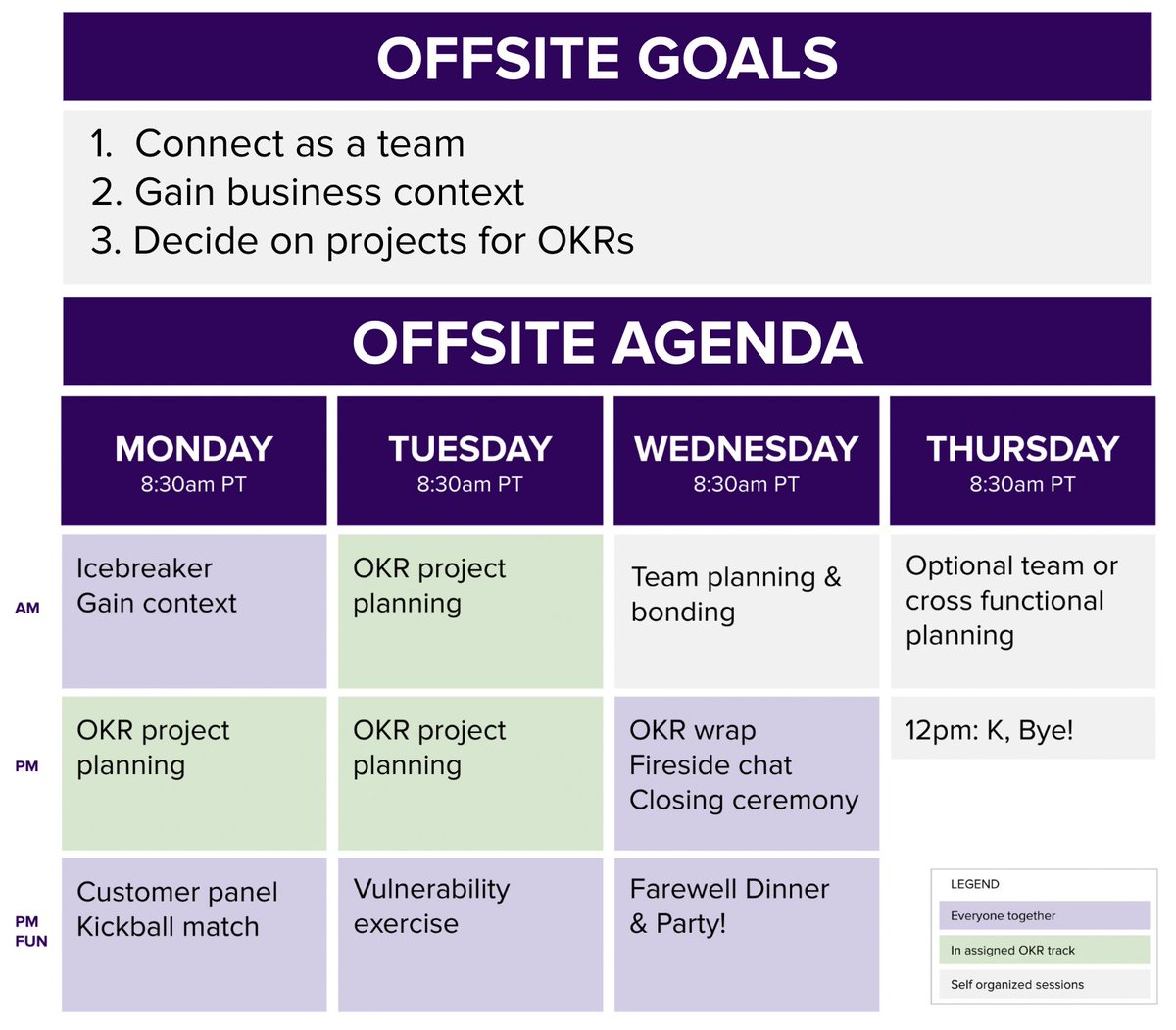

Going remote? Learn how this startup created an operating rhythm for remote work
source link: https://nextbigwhat.com/going-remote-learn-how-this-startup-created-an-operating-rhythm-for-remote-work/
Go to the source link to view the article. You can view the picture content, updated content and better typesetting reading experience. If the link is broken, please click the button below to view the snapshot at that time.


Going remote? Learn how this startup created an operating rhythm for remote work
The first 6 months of remote were so hard that I thought our company might fail.
Now we’re 100% remote & I can’t imagine ever going back.
The big unlock? A new operating rhythm.
Let’s break it down.
2 themes were consistent:
– Our team felt isolated
– Our team felt that the quality of our decisions went down
We ultimately pinpointed the root cause for both themes to a lack of connection and context.
Lack of context led to misalignment and bad decisions.
We tried *everything and anything* to fix it.
Zoom happy hrs, decision docs, etc.
Nothing was as good as in person.
Finally a light bulb went off!
Every day, we ran into colleagues in person and got connection and context.
This tiny but consistent wave of energy made us belong and supported better decision making.
In the new boxed-in zoom world, this daily rhythm was eliminated.
One that generated the same amount of cumulative connection and context, but relied on less frequent in-person time.
In other words – one BIG quarterly wave to replace lots of tiny daily waves.

(1) Established a quarterly operating rhythm
(2) Added an in-person offsite as the seminal drumbeat in that rhythm
Here’s a snapshot of what our operating rhythm looks like.
I’ll break down the most important parts next.

OKRs are company-wide initiatives, defined by an inspiring Objective and a Key Result to scope it.
Each quarter I create 4 OKRs with input from my exec team.
During our offsite, our team creates projects to hit the OKRs.
Example OKR:
Operating rhythms are valuable b/c they are repeatable.
Our structure repeats quarterly, like a wave.
Week 1: Offsite
Week 4: Board meeting
Week 7: Retrospective
Week 9-12: Offsite planning
Offsite goals/agenda are always the same.

Our drumbeat is an offsite.
Most offsites focus on presentations or discussions (vs. decisions).
We disagree with this.
We tee up the offsite with pre-reads, & focus in person time on debates & FINAL decisions, including final OKRs and projects.
Pure kumbaya offsites aren’t energizing IMO.
Smart people want to understand the company’s vision/priorities and engage in making it happen.
Our team gets so pumped up that they organically create the fun (e.g. music videos, collages, dance offs).
Offsites and board meetings require a lot of the same content: priorities, quarterly reflection, closing the books, updating financials.
We schedule our board meeting right after the offsite.
This reduces board prep to ~10 hours.
My biggest hack for driving execution after the offsite is to translate quarterly goals into weekly goals.
e.g. 300 Opportunities/Qtr -> W1=12, W2=24, … W12=300.
Review actual vs. goal dashboards and take action in weekly execution meetings.
No matter how hard we try, we always screw something up, usually by oversubscribing ourselves.
Retros help ensure our most important goals come to fruition by giving us a chance to remove lower priority projects or reallocate resources.
We get the benefits of remote work (access to talent, live anywhere) without the trade-off of lost connection and context.
We’re layering quarterly public launches/events next.
– Isolation and poor quality decision making are frequent byproducts of going remote
– The root cause to both is missing context and connection
– Establish an operating rhythm that works for your business to overcome this
– Anchor the rhythm with an effective drumbeat

Follow: @jalehr
[Via]
Recommend
About Joyk
Aggregate valuable and interesting links.
Joyk means Joy of geeK